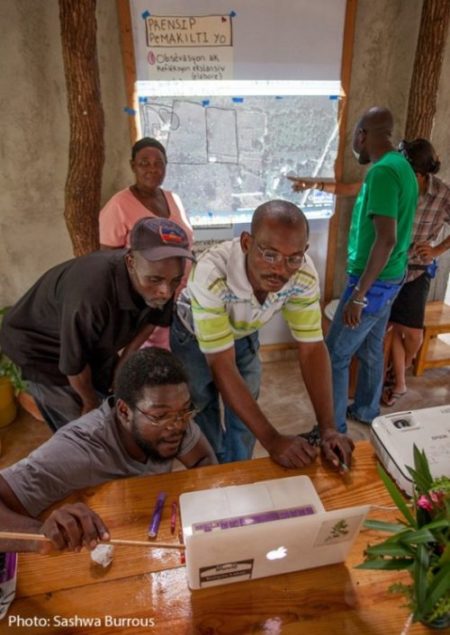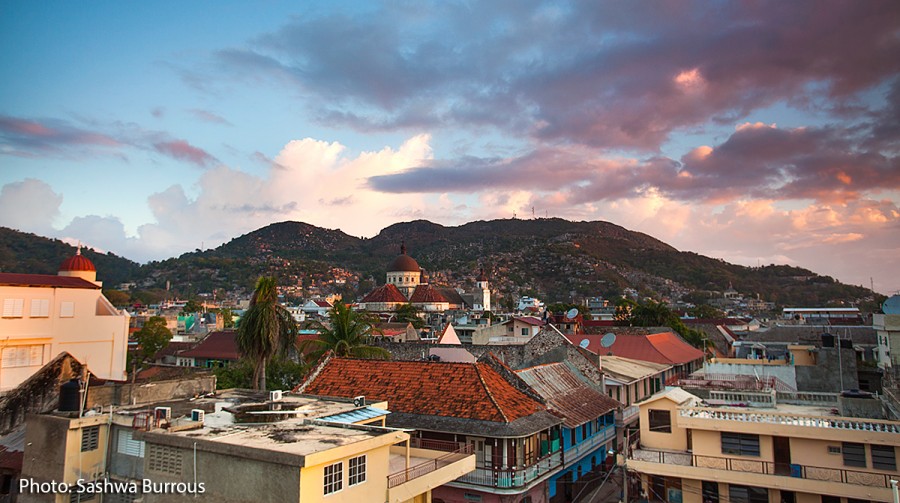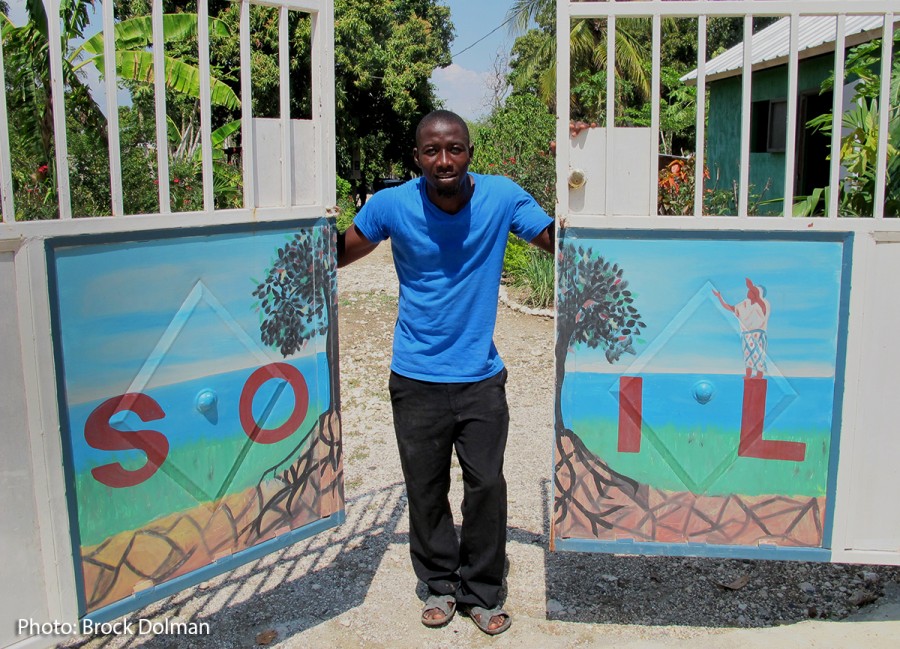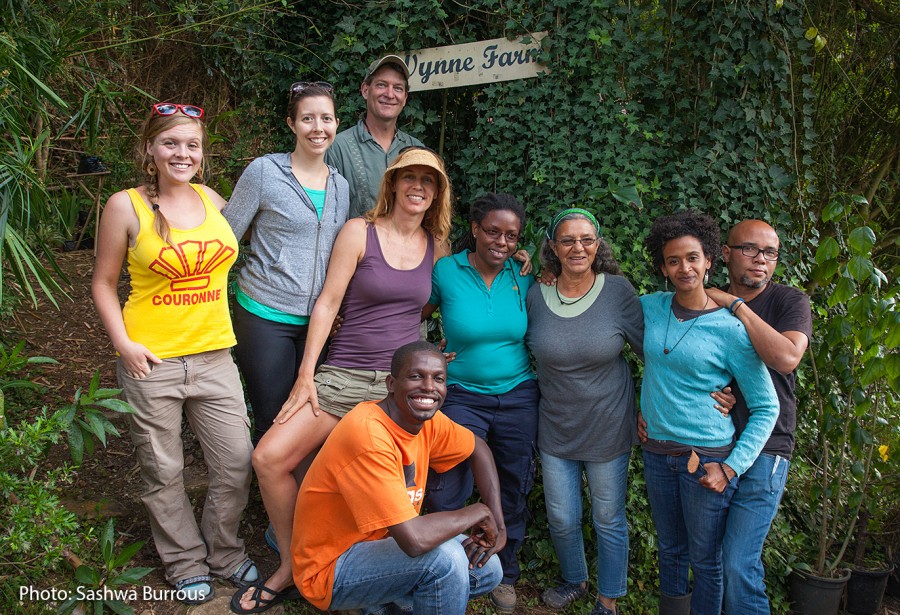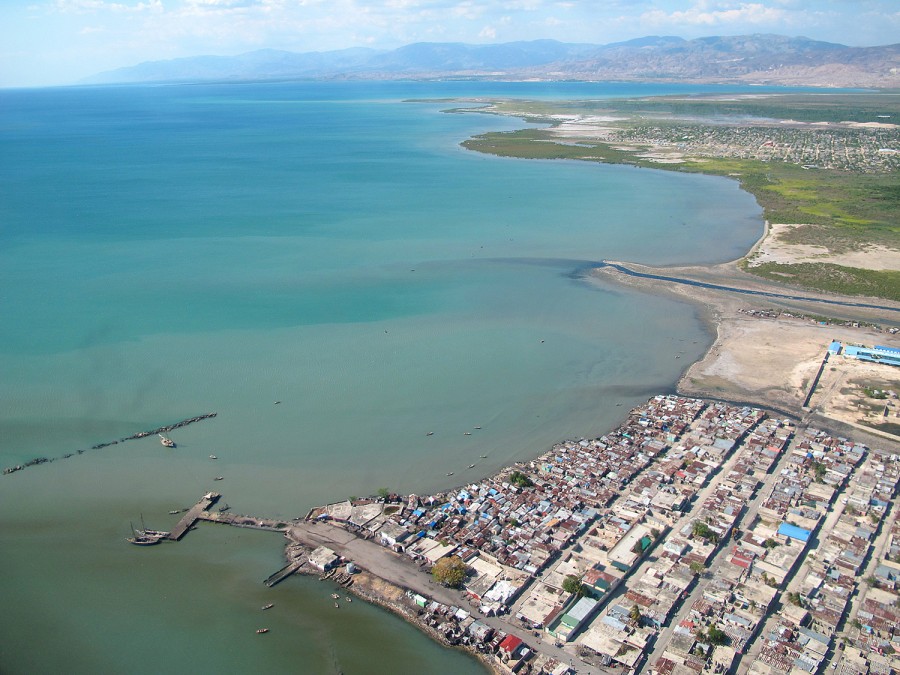 We met our translator today, Jean Arnaud. He is Haitian and has lived in the US off and on since he was 10 years old. He studied permaculture at UMASS and was part of the 2012 student team awarded the Champions of Change Challenge, part of President Obama’s Winning the Future initiative. Jean is a true ambassador for us – he straddles both cultures of the US and Haiti linguistically, culturally, ecologically; he is an experienced permaculturist understanding the work OAEC and SOIL are collaborating on, and he has worked with SOIL before so he knows all the players as well as others in related fields that we should learn from. We are so thankful for Jean Arnaud!
We met our translator today, Jean Arnaud. He is Haitian and has lived in the US off and on since he was 10 years old. He studied permaculture at UMASS and was part of the 2012 student team awarded the Champions of Change Challenge, part of President Obama’s Winning the Future initiative. Jean is a true ambassador for us – he straddles both cultures of the US and Haiti linguistically, culturally, ecologically; he is an experienced permaculturist understanding the work OAEC and SOIL are collaborating on, and he has worked with SOIL before so he knows all the players as well as others in related fields that we should learn from. We are so thankful for Jean Arnaud!
Jean took us, SOIL staffers, Erica, Heather, and SOIL friend, Ingrid, up the mountain south of Port-au-Prince to visit Wynne Farm and Ecological Reserve (http://wynnefarm.org) in the Kenscoff area. Jane, the vibrant farm owner, grew up in Haiti with an American dad and Haitian mom. Her dad, Victor Wynne, moved to Haiti in 1923 and started a lifelong obsession with the cultivation and preservation of soil, water, and perennial food crops.
Victor, an early permaculture pioneer, was exchanging ideas in letters with Bill Mollison, Robert Rodale, and other great ecology minds as he developed his understanding and skills for managing water and soil. Victor seems to have independently hit upon the concept of on-contour swales for water infiltration and soil retention! Over his life, he brought hundreds of edible perennials to his farm in Haiti including a large bamboo collection and Andean edibles (narranjia, pepino dulce, tamarillo, passion fruit) growing next to peaches and kale. The home site at the farm sports roof water catchment, swale garden beds, sheet mulching, perennial food forests and annuals thrown in, etc.
Jane worked with her father until he died at the age of 94 (working on the farm daily until 93) and continues to implement his vision of the biodiversity farm and education center with her daughter, Melissa and her family. They are an inspiring team. Melissa is a yoga teacher, environmental educator, and all-around deep thinker. School groups from our PAP visit each week and cultivate biophilia singing about the importance of the Earth and her systems, repurposing plastic bags into sturdy totes, creating recycled paper brickets, all while stuffing themselves with loquats.
Sound familiar? A true sister organization! Wynne farm seems to be a unique place with loving, earth system-minded caretakers in a sea of soil erosion. For more information about this amazing education and demonstration farm, check out their webpage at wynnefarm.org where you can read and listen to features done on them by NPR and the Toronto Star as well donate to their fine work. Viva la Wynne!


